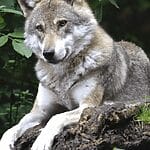The animal kingdom makes rainbows full of different colored creatures from chameleons, clownfish, and butterflies.

This bears no exceptions for birds, as well. From macaws, peacocks, and toucans; you’ll find a kaleidoscope of color within the avian family.
One of the most outstanding and eye-catching birds in the kingdom is the bluebird. Although, you may be wondering, are there more than one type of bluebird?
Well, you’re in luck as this guide will provide you with a detailed description of the different types of bluebirds.
1. The Eastern Bluebird
This is one of the most popular types of bluebirds in the sky. In fact, many people believe this to be the sole bluebird species.
However, there are three species of the specific bluebird, these include western bluebirds, mountain bluebirds, and of course eastern bluebirds.
These can be seen throughout the eastern sphere of North America.
Bluebirds belong to the thrush family, and when they sing they produce a melodic tone, which some may recognize.
Diet – This bluebird’s preferred cuisine is insects captured from the ground. Grasshoppers, caterpillars, spiders, crickets, mealworms, and beetles – are all on this bird’s favorite menu.
Color – The males are mostly blue, while the females sport a duller, blue-gray color, containing various hues of blues found on their tails and wings.
While this bird’s perching preference is located on tree branches closer to the ground for quick access to tiny prey, grubs, and insects, they can also spot their next meal from over 60 feet away.
These birds can be found gliding through golf courses, backyards, sparse woods, open areas, and field edges.
Their eggs consist of a beautiful blue hue which is comparable to the crystal-clear oceans in the Caribbean.

These are family-bound birds and can be seen traveling in large flocks to migrate to the south or north for food or protection.
In the fall seasons, they consume large amounts of fruit such as blueberries, honeysuckle, hackberries, mistletoe, and much more.
2. Blue Grosbeak
Blue grosbeaks thrive in environments such as overgrown fields and thickets where they often remain hidden.
Their name provides us with their most prominent features. These being their color and large bills.
Moreover, these birds prefer to be closer to water.
Diet – Their favorite foods consist of seeds and insects. In the summer, they consume a lot of bugs such as beetles, praying mantises, grasshoppers, caterpillars, and much more. Likewise, they will also eat snails and spiders.
Color – Male blue grosbeaks generally have bright-blue bodies, whereas the females are completely light brown.
3. Blue Jay
Also known as a jaybird, there are four different types of blue jays. Many people may believe that a blue jay and bluebird are the same; however, they are not.
These are two different creatures and don’t share any common features.
Not only do they belong to different families, but they are also vocally different.
Whereas, the biggest difference can be found in the way they look.
Blue jays prefer to live in forests on forks of high trees where the branches meet the trunk at 20 feet high, whereas bluebirds prefer low-lying locations (refer back to #1 for more information).

Diet – Blue jays are omnivores. ⅔ of the diet consists of vegetation, while ⅓ of it is carnivorous.In the summer months, when they are tending their nestlings/ hatchlings, they will mostly eat insects. Whereas in the winter, they consume seeds, acorns, and fruits. Nuts are among their favorite foods and they will often stash or bury them away to eat later on.
Color – The male blue jays are clearly recognized through their white, black, and blue colors. Whereas the females are typically gray with light orange colors found on their chests. If you notice a bird featuring a blue body and pitch-black head, then it is likely to be a Steller’s jay. This shouldn’t be mistaken for a blue jay. These birds are related; however, not the same. Differences include:
- The Steller’s jay features a long and powerful bill with a small hook
- A triangular shape is found on their chests.
- They are located in evergreen forests within western North America.
The main similarities between the two birds are common behaviors. For instance, they are both boisterous, cocky, and loud.
When threatened, bold jays will often work together to attack predators. Otherwise known as mobbing.
However, blue jay’s aren’t bulletproof. They aren’t one of the fastest flying birds; therefore, they are often targeted by predators such as owls and hawks following and watching them in wide spaces.
4. Indigo Bunting
As its name suggests, this is another bluebird! The indigo bunting is a part of the cardinal family.
These birds could be considered night owls due to their unconventional migrations.
Whereby they migrate through the night, using the stars to navigate and find their way. You will often find these birds singing along telephone lines or on high-tree tops.
Diet – During the summer months, these birds will eat spiders and insects. While in the winter months, they’ll eat seeds, with grass seeds being their favorite. They forage and search for their food in trees, scrubs, or on the ground.
Color – The male Indigo Bunting changes color depending on the season. In summer, they are a vibrant deep blue all over. Whereas, in the winter they change to a brown. The females, however, remain a brown color all year round.
You will typically find indigo bunting in brushy areas such as shrubs, hedgerows, brushy forests, and grasslands.
The females are generally busier than the males; thus, not seen as often.
The females are responsible for keeping the eggs and their young safe who hide in dense thickets away from predators.
Final Thoughts
It is commonly believed that there is only one type of bluebird. However, this is not the case.
Hopefully, this guide has provided you with everything you need to know about the different types of bluebirds.








